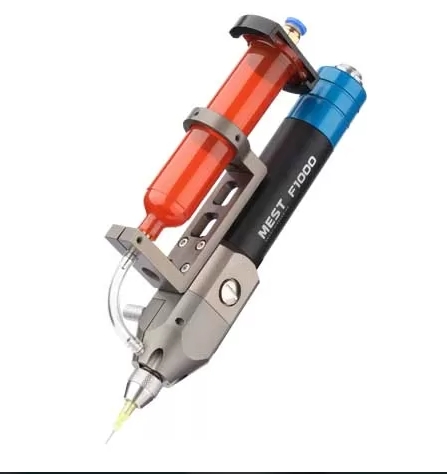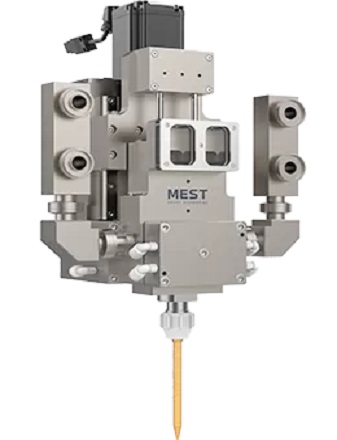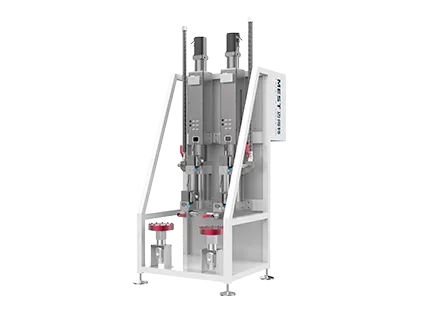
English
What are you looking for?
In the rapidly evolving world of electric vehicle (EV) battery manufacturing, efficiency and precision are paramount. High-viscosity fluids, essential for various components, pose significant challenges. Traditional fluid dispensing methods often fall short, leading to inefficiencies and increased costs.
Non-contact fluid dispensing systems have emerged as a game-changer, offering solutions to these challenges. By eliminating direct contact, these systems ensure precise, consistent, and contamination-free fluid application. This innovation has prompted leading EV battery manufacturers to make the switch.
In this article, we will delve into the intricacies of non-contact fluid dispensing systems, explore their benefits, and explain why they are becoming the preferred choice for high-viscosity fluid applications in the EV battery industry.
Non-contact fluid dispensing systems, designed to handle a variety of fluids without direct contact, are revolutionizing the industry. These systems use advanced technology to dispense fluids accurately and consistently. By eliminating the need for direct contact, they reduce the risk of contamination and ensure a cleaner application process. Moreover, they are capable of handling high-viscosity fluids, which are often challenging for traditional methods. This innovation not only improves efficiency but also enhances the quality of the final product. As a result, there is a growing interest in these systems among EV battery manufacturers.
High-viscosity fluids, essential in EV battery manufacturing, present several challenges. They are difficult to handle, prone to clogging, and require precise application. Traditional dispensing methods often struggle with these fluids, leading to inconsistencies and waste. Additionally, there is a higher risk of contamination, which can compromise the quality of the battery. These challenges necessitate a more advanced solution. Non-contact fluid dispensing systems, designed to address these issues, offer a viable alternative. By providing a more controlled and efficient dispensing process, they help manufacturers overcome the limitations of traditional methods.

Non-contact fluid dispensing systems, equipped with advanced technology, effectively address the challenges posed by high-viscosity fluids. They use precise control mechanisms to ensure consistent fluid application, reducing waste and improving efficiency. By eliminating direct contact, they minimize the risk of contamination, ensuring a cleaner process. Additionally, these systems are designed to handle a wide range of viscosities, making them versatile and adaptable. This flexibility allows manufacturers to use them for various applications, enhancing their overall production capabilities. Consequently, non-contact fluid dispensing systems are becoming the preferred choice for handling high-viscosity fluids in the EV battery industry.
Advanced non-contact fluid dispensing systems boast several key features that set them apart. Firstly, they offer precise control over fluid flow, ensuring consistent application. Secondly, they are designed to handle a wide range of viscosities, making them versatile. Thirdly, they minimize the risk of contamination by eliminating direct contact. Additionally, these systems are equipped with advanced sensors and control mechanisms, enhancing their accuracy and reliability. They are also easy to integrate into existing production lines, making them a practical choice for manufacturers. These features collectively contribute to improved efficiency, reduced waste, and higher product quality.
For EV battery manufacturers, the benefits of non-contact fluid dispensing systems are manifold. Firstly, they improve efficiency by ensuring precise and consistent fluid application. Secondly, they reduce waste, leading to cost savings. Thirdly, they minimize the risk of contamination, enhancing product quality. Additionally, these systems are versatile, capable of handling a wide range of viscosities. This flexibility allows manufacturers to use them for various applications, improving their overall production capabilities. Furthermore, they are easy to integrate into existing production lines, making them a practical and cost-effective solution. As a result, many leading EV battery manufacturers are making the switch to non-contact fluid dispensing systems.
MEST's non-contact fluid dispensing systems deliver unmatched precision with high accuracy, ensuring flawless application for industries like electronics, automotive, and medical. Our advanced vacuum dispensing systems eliminate air entrapment, providing bubble-free results for superior product quality. Customizable fluid dispensing valve, including jetting and piezoelectric options, handle diverse fluids and viscosities, seamlessly integrating with existing automation for enhanced efficiency. MEST company's ISO-certified solutions meet stringent industry standards, guaranteeing reliable performance in critical applications like semiconductor bonding and medical device assembly. With a focus on cost-effectiveness, our systems reduce waste and operational costs while maintaining high precision and repeatability. Backed by extensive industry experience and global technical support, MEST ensures tailored solutions and long-term reliability for your production needs.
The future of fluid dispensing in EV battery manufacturing lies in non-contact systems. These systems, designed to handle high-viscosity fluids with precision and consistency, offer numerous benefits. They improve efficiency, reduce waste, and enhance product quality. As the industry continues to evolve, there will be a growing demand for advanced fluid dispensing solutions. Non-contact systems, with their versatility and reliability, are well-positioned to meet this demand. By adopting these systems, manufacturers can stay ahead of the curve and ensure their continued success in the competitive EV battery market.


